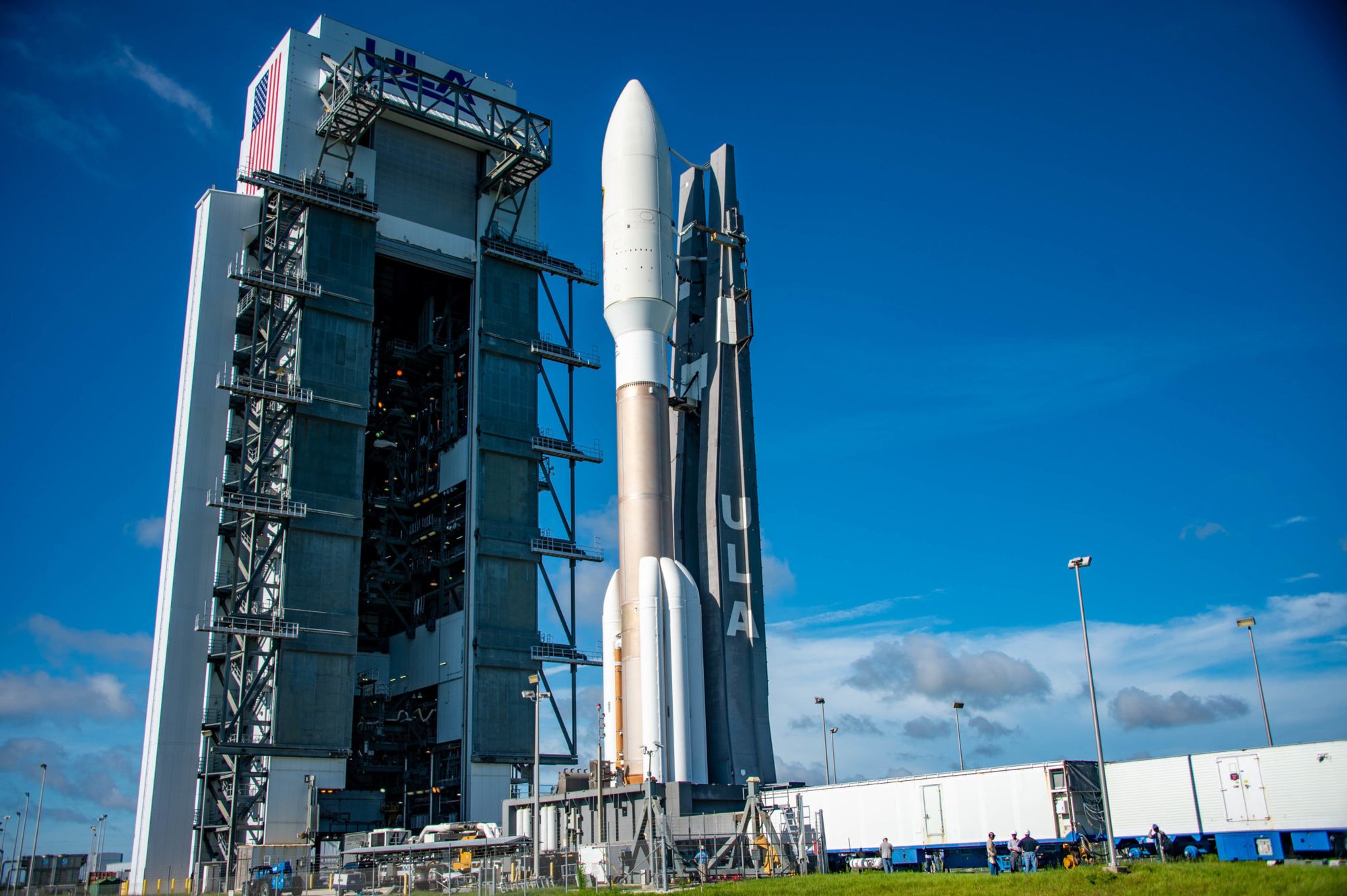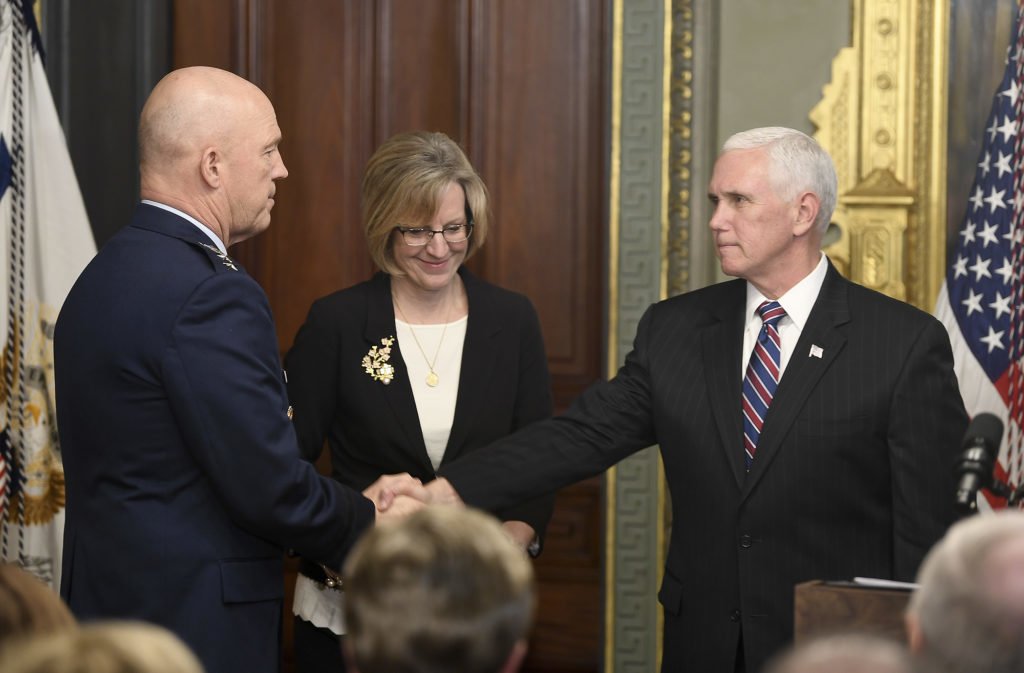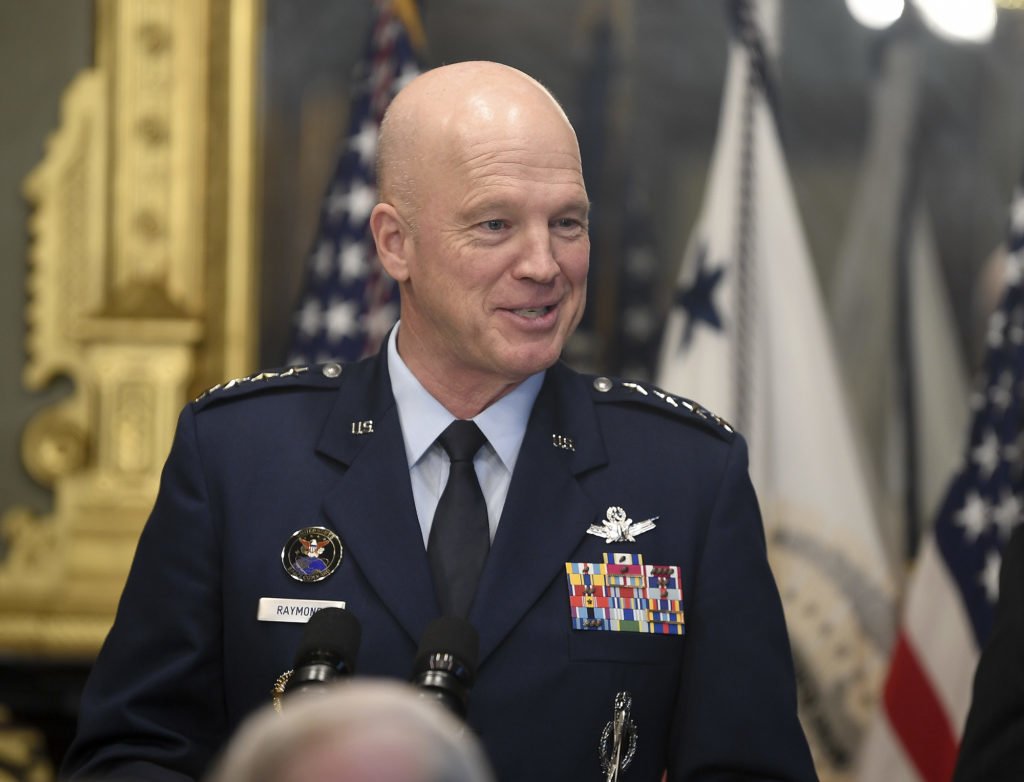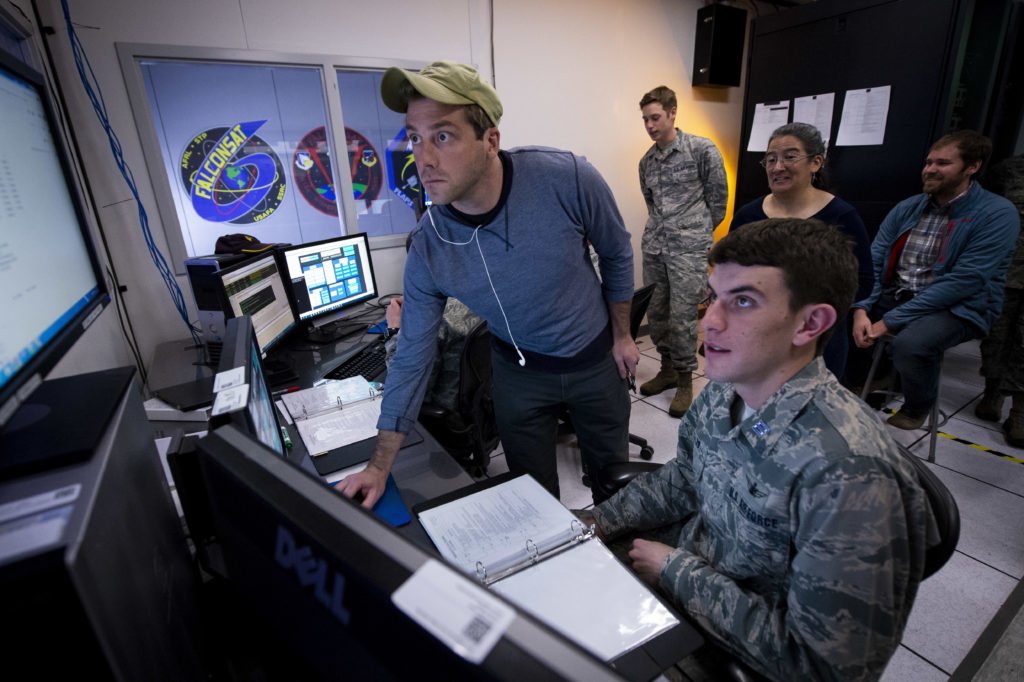Pence Swears In First Chief of Space Operations at White House Event

Space and Missile Systems Center’s AEHF-5 (Advanced Extreme High Frequency) encapsulated satellite mated with an Atlas V launch vehicle rolls out in preparation for launch Aug 8, 2019, at Cape Canaveral Air Force Station, Aug. 6, 2019. Photo by Van Ha/U.S. Air Force.
This article was first published on Jan. 14, 2020, by the Department of Defense.
Vice President Mike Pence swore in Air Force Gen. John W. “Jay” Raymond as the highest-ranking military leader of the newly created U.S. Space Force in a ceremony that recognized the arrival of the nation’s newest military branch.
Raymond was formally designated the first chief of space operations in a formal ceremony sponsored by the White House and held at the Eisenhower Executive Office Building. It came less than a month after the Space Force, by law, became the sixth independent branch of the U.S. military, marking the first time since 1947 that a new military branch had been created.
“The first decision the president made after establishing the Space Force was deciding who should be its first leader,” Pence said. “I was around when the President made that decision and I can tell you, he never hesitated. He knew right away there was no one more qualified or more prepared from a lifetime of service than General Jay Raymond to serve as the first leader of the Space Force.”

The Space Force was established Dec. 20 when President Donald J. Trump signed the National Defense Authorization Act. He also appointed Raymond to lead the Space Force. Although directed by its own military leadership, the Space Force is nested within the Department of the Air Force.
Raymond noted the historic nature of the moment. “Not only is this historical; it’s critical,” he said. “That is not lost on me or the outstanding Americans who serve with me.”
The Space Force’s overarching responsibility is training, equipping and organizing a cadre of space professionals who protect U.S. and allied interests in space while also providing space capabilities to the joint force. The Space Force’s mandate includes developing military space professionals, acquiring military space systems, refining military doctrine for space power, and organizing space forces for use by combatant commands.
A major reason for creating the Space Force is the importance of space for both national security and everyday life. It is the backbone that allows for instant communication worldwide, precision navigation and global commerce. The U.S. Space Force will ensure the country’s continued leadership in space, Raymond said. Equally important, he added, is avoiding conflict in space.

“We want to deter that conflict from happening,” he said. “The best way I know how to do that is through a position of strength.”
Among those attending the ceremony were Defense Secretary Dr. Mark T. Esper, Deputy Defense Secretary of Defense David L. Norquist, Air Force Secretary Barbara Barrett, Air Force Chief of Staff Gen. David L. Goldfein and Air Force Gen. John E. Hyten, vice chairman of the Joint Chiefs of Staff, as well as Adm. Charles Ray, vice commandant of the Coast Guard; Navy Adm. Michael Gilday, chief of naval operations; and Air Force Gen. Joseph L. Lengyel, chief of the National Guard Bureau.
“We are moving forward with alacrity and in accordance with presidential direction, the law, and DOD guidance,” Barrett said about the establishment of the new U.S. Space Force. “Directing this effort is the incomparably qualified leader, General ‘Jay’ Raymond. As a career space officer, he’s the perfect person to guide this lean, agile, vital Space Force.”
Raymond was the natural choice for the job. He is the commander of the U.S. Space Command; the nation’s unified command for space.

Before his new role, Raymond was the commander of Air Force Space Command, which carried the nation’s primary military focus on space, managing a constellation of satellites, developing policy and programs and training frontline space operators. Air Force Space Command was redesignated as the U.S. Space Force under the recently passed NDAA.
More broadly, the Space Force is responsible for maintaining the United States’ space superiority, even as space becomes more crowded and contested. The NDAA, which created the Space Force, also directs that the Space Force “shall provide the freedom of operation in, from, and to space, while providing prompt and sustained space operations.”
(Charles Pope is assigned to the Secretary of the Air Force Office of Public Affairs. Air Force Maj. Will Russell contributed to this report.)

For more content like this, visit defense.gov.
BRCC and Bad Moon Print Press team up for an exclusive, limited-edition T-shirt design!
BRCC partners with Team Room Design for an exclusive T-shirt release!
Thirty Seconds Out has partnered with BRCC for an exclusive shirt design invoking the God of Winter.
Lucas O'Hara of Grizzly Forge has teamed up with BRCC for a badass, exclusive Shirt Club T-shirt design featuring his most popular knife and tiomahawk.
Coffee or Die sits down with one of the graphic designers behind Black Rifle Coffee's signature look and vibe.
Biden will award the Medal of Honor to a Vietnam War Army helicopter pilot who risked his life to save a reconnaissance team from almost certain death.
Ever wonder how much Jack Mandaville would f*ck sh*t up if he went back in time? The American Revolution didn't even see him coming.
A nearly 200-year-old West Point time capsule that at first appeared to yield little more than dust contains hidden treasure, the US Military Academy said.












